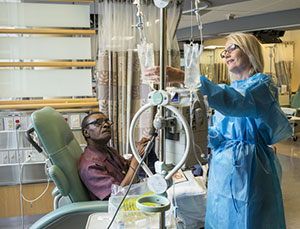Historical Timeline
1940s
1943:
Creating the Ontario Cancer Treatment and Research Foundation
The province of Ontario establishes the Cancer Act, resulting in the creation of the Ontario Cancer Treatment and Research Foundation. The recommendation of its medical advisory board is that cancer care should be concentrated in government clinics, with three university centres established for teaching about cancer. Six committees are created to focus on the different aspects of the foundation: scientific research, clinical research, public education, professional education, cancer centres and management. Dr. Gordon E. Richards is named as managing director and the Foundation receives a $500,000 grant to begin the work of centralizing cancer care for the province. Offices are established at 22 College Street in Toronto, where rent was $204 per year and staff included the managing director, a full-time secretary and part-time Secretary Treasurer F.D. Beauchamp. From this modest beginning, the Foundation would grow into CCO as we know it today.
1947:
Opening our first cancer clinic
On March 20, 1947, the Foundation opens its first cancer clinic. Located in the newly completed Victory Wing of the Kingston General Hospital, the Ontario Cancer Foundation Kingston Clinic occupies 4,000 square feet and brings together practitioners of cancer care including radiotherapists, surgeons and specialists. By 1954 we are managing clinics in Hamilton, Ottawa, London, Windsor and Port Arthur, with clinics in Sudbury and Toronto added at a later date. In 1984 these eight clinics will be renamed regional cancer centres and in 2004 operations will be transferred to their host hospitals, with each hospital integrating all oncology operations under their roof. Since 2003, Ontario has added six new cancer centres to the original eight.

1950s
1951:
Making history with Cobalt-60 beam therapy
London's Victoria Hospital makes history by treating a patient with the cobalt-60 isotope. This breakthrough treatment uses gamma radiation and is more effective against deep-treated cancers.
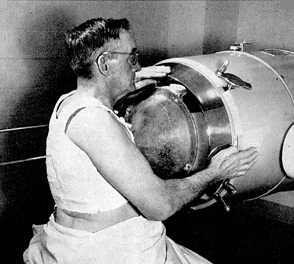
1958:
Opening their doors for the first time, the Ontario Cancer Institute and Princess Margaret Hospital
On September 25, 1958, with support from the Foundation, the Ontario Cancer Institute and Princess Margaret Hospital open their doors. Ontario's Premier unveils a new lodge designed to accommodate ambulatory patients in October of the same year. It soon also becomes home to the Ontario Institute of Radiology, which moves to this new building from the Toronto General Hospital.

1960s
1960:
Launching a therapeutic drug plan
Recognizing the high cost of drugs for cancer patients, we launch our therapeutic drug plan. Initially available only to individuals treated at home, it is later expanded to include outpatients of regional cancer centres.
Testing bone marrow for radiation sensitivity leads to a ground-breaking discovery
Drs. Ernest McCulloch and James Till, a biologist and physicist working at the Ontario Cancer Institute, begin testing bone marrow cells to accurately measure their radiation sensitivity. This leads to a ground-breaking chance discovery, as they learn that the nodules that developed in the spleens of mice came from a single marrow cell. For the first time this demonstrates the existence of stem cells and leads the way for bone marrow transplants and other treatments for chronic diseases.

1970s
1970:
Incorporating the Ontario Cancer Registry
The Ontario Department of Health transfers its cancer statistics operations and the Ontario Cancer Registry to the Foundation, leading to us assuming responsibility for the repository of cancer data in the province. Today, this data is used to monitor the incidence of cancer, mortality, survival patterns and cancer trends, all factors considered when planning cancer care in the province.
1972:
Receiving our first computer
We obtain a GE 265 Mark I Computer, gifted to the Foundation by the Canadian General Electric Company. Acquired by chief medical statistician Alf Sellers, this computer fills an entire room at the General Electric office on King Street in Toronto. The Foundation and clinics throughout the province are linked to the computer through a telecommunications network. Over time this evolved and today we create information management systems that improve the safety and experience of cancer patients throughout the province.
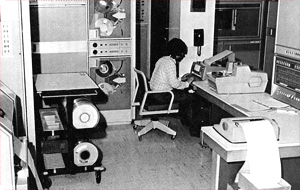
1980s
1982:
Establishing a new approach to clinical trials
Bringing together all cancer centres, the Foundation helps organize the creation of the Ontario Clinical Oncology Group, an affiliate organization responsible for carrying out cancer clinical trials throughout the province and the country. Dr. Peter McCulloch is named the Group's first director.
1984:
Improving access to health information for Ontarians
Partnering with the Canadian Cancer Society, the Foundation helps to create a provincial Cancer Information Service to better inform individuals about their disease and the resources available to them.
1990s
1990:
Introducing the province’s first organized breast screening program
The first of its kind in the province, the Ontario Breast Screening Program provides high-quality breast cancer screening for most women ages 50 to 74 and women ages 30 to 69 who are confirmed to be at high risk of getting breast cancer. It aims to decrease deaths from breast cancer by detecting the disease early, when more treatment options are available. Screening mammography can find breast cancers when they are small, less likely to have spread to the lymph nodes and are more likely to be successfully treated.
1992:
Improving access to radiation treatment
With the aim of resolving increasing wait times, a temporary central office refers patients to cancer centres further from home. In order to give all Ontarians access to timely radiation treatment the office is re-opened in 1999 when wait times again become too long.
1994:
Developing a database of evidence-based guidelines and standards
Established to develop, implement and monitor province-wide practice guidelines and standards, the Ontario Cancer Treatment Practice Guidelines are created. Known today as the Program in Evidence-Based Care, their goal is to improve the quality of cancer care by helping to apply the best scientific evidence in practice and decisions.
Improving research on familial and inherited cancer
The Ontario Cancer Genetics Network is created and oversees both research on familial and inherited cancer and the Ontario Task Force on the Primary Prevention of Cancer. The following year the task force publishes recommendations on how family physicians and other primary care providers can help reduce the incidence of cancer.
Establishing a framework of cancer services in Ontario
The Ontario government releases Life to Gain, the cancer strategy for the province established through a public consultation from the previous year. This plan results in the creation of the Provincial Cancer Network with the mandate to develop a broad framework of cancer services in Ontario. The network represents the needs of cancer patients, healthcare providers, agencies, community groups, hospitals and planners. Its recommendations are published in April 1995 in the provincial Cancer Action Plan.
1995:
Taxol and chemotherapy in Ontario
Taxol, a new chemotherapy drug, is approved for use in the province and we receive $5 million in funding to establish a pilot program for it. Close to 1,000 cancer patients receive Taxol through this program.
Leveraging information to enhance cancer care
The Division of Information Sciences is established within our organization to further leverage the use of information technology in gathering, analyzing and using data to enhance cancer care in the province.
1996:
Announcing a new provincial framework for cancer care
The Minister of Health appoints a transition team to implement a new provincial framework for cancer care, including the transformation of the Ontario Cancer Treatment and Research Foundation into Cancer Care Ontario. This reorganization gives us a stronger and more comprehensive mandate to improve cancer services in the province.
1997:
A new name for a new era of cancer care
On April 29th we officially adopt the name Cancer Care Ontario. This new agency takes on the task of coordinating and integrating cancer treatment services across the province.

1998:
Tackling cancer risk factors
We begin implementing an ambitious plan for changes to the cancer care system by creating a Cancer Prevention Unit focused on well-established cancer risks: smoking, obesity and physical inactivity. Prevention efforts continue on those risk factors to this day as well as on developing a better understanding of the impact of occupational and environmental carcinogens.
Helping surgeons in cancer care
The Surgical Oncology Network is formed to generate and provide information on cancer surgery and serve as a link between cancer centres, referring surgeons, family physicians and patients. Today, the Surgical Oncology Program continues to drive better decisions, enhance patient care and improve the quality and accessibility of cancer surgery across the province.
2000s
2000:
Launching an organized screening program for cervical cancer
The Ontario Cervical Screening Program launches to help reduce cervical cancer rates in Ontario. The program’s goal is to lower the number of new cervical cancer cases and deaths from cervical cancer by increasing the number of women who are regularly screened. It supports doctors and nurse practitioners so they can provide the best possible cervical screening for their patients.
2001:
Improving access to radiation treatment to reduce the number of Ontarians being treated out of country
In response to increasing numbers of patients being referred to the United States for radiation treatment we open an after-hours clinic, managed through a contractual agreement with Canadian Radiation Oncology Services, to provide timely radiation services for breast and prostate cancer patients. Though controversial, this innovative solution eliminates the need to send individuals to the United States for treatment. In September 2003, management of the clinic is assumed by the Toronto-Sunnybrook Regional Cancer Centre, now the Odette Cancer Centre, and the R.H. McLaughlin Durham Regional Cancer Centre. Since then, wait times for radiation treatment have steadily improved thanks to better planning and new investments in cancer centres, radiation equipment replacement and personnel.
2002:
Establishing a new council to improve the quality of care for all Ontarians
The Quality Council of Ontario is established. The first of its kind in Canada, the council identifies and assesses gaps in cancer system performance and quality, and advises on planning and strategic priorities.
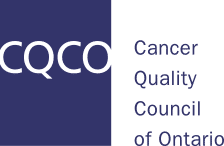
2003:
Outlining cancer care plans for the province.
With the release of the Cancer 2020 report Targeting Cancer: An Action Plan for Cancer Prevention and Detection, an ambitious action plan is laid out for us and other organizations involved in cancer prevention and early detection. A progress report follows three years later. Thanks to the efforts of a wide range of organizations and individuals, important gains have been made in cancer prevention and early detection since the initial launch of the Cancer 2020 report, particularly in lowering smoking rates.
Strengthening the quality of cancer services in Ontario
The Cancer Quality Council of Ontario publishes its inaugural report, Strengthening the Quality of Cancer Services in Ontario. A two-volume book that outlines the current state of cancer programs and services in the province, it includes contributions from over 30 oncology experts, addressing major quality issues in the cancer system.
2004:
Creating a plan for the future of cancer care
The release of the Ontario Cancer Plan 2005-2008 formalizes a three-year action plan and roadmap for the province's new cancer system. It focused on building system capacity to meet the growing needs of cancer patients. This plan laid the foundation for the second and third cancer plans.
Integrating regional cancer centres with their host hospitals
The formal integration of regional cancer centres with their host hospitals allows for more comprehensive care under one umbrella. This change creates a coordinated and seamless pathway for patients and their families.
Improving wait times across the province
Because of our experience working with complex provincial health information systems, the Ministry of Health and Long-Term Care tasks us with the development and operation of the Wait Time Information System. A key part of the government's Wait Time Strategy, this is the first-ever information system that monitors, measures and publicly reports on wait times across the province.
Setting out a strategy to improve cancer care for First Nations, Inuit and Métis
The publishing of the first Aboriginal Cancer Strategy addresses the inequities, variations and disparities experienced by First Nations, Inuit and Métis peoples in Ontario.
2005:
Establishing regional cancer programs to respond to local needs
We establish the Regional Cancer Programs comprised of stakeholders, healthcare professionals, and organizations involved in cancer prevention and care. These programs work at the local level to respond to issues and needs, improve access, wait times, and quality of care and act on provincial standards and programs.
Tracking progress in improving cancer care in Ontario
The Cancer Quality Council of Ontario launches the Cancer System Quality Index. The first of its kind in North America, this web-based index is updated annually, evaluating progress against the disease and identifying areas for improvement in prevention, treatment and care.
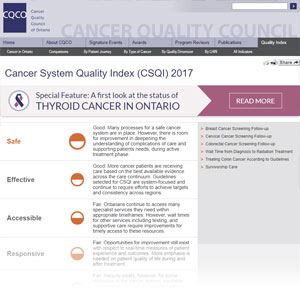
Launching the Ontario Institute for Cancer Research
The Ontario Government commits to spending $142 million dollars over four years to create the Ontario Institute for Cancer Research. Dr. Tom Hudson is appointed President and Scientific Director of the Institute in July 2006 and, under his guidance as an experienced leader and internationally recognized genetics researcher, the institute becomes a major hub for cancer research in Ontario. Over time the new collaborative approach championed by the Institute strengthens Ontario's reputation for innovation in cancer research and brings advanced cancer therapies to patients.
2006:
Helping patients cope with the physical and emotional effects of cancer
With the creation of ISAAC, or 'Interactive Symptom Assessment and Collection', an easy-to-use electronic tool was developed to allow individuals to track their symptoms. The system is easily accessible through a touch-screen computer kiosk at their local cancer centre or from home via the internet. Assessments are automatically sent to their care team, so that their symptoms can be identified and managed quickly and effectively. While initially developed as a short-term project, it has continued to this day and has expanded across the province. The tool was adopted in 2008 by the British Columbia Cancer Agency and has also won the top award for Innovation in Health Information Management at the Celebrating Innovations in Health Care Expo.
2007:
Studying cancer risk factors over the long term
A group of healthcare partners begin a long-term research project to improve our understanding of the risk factors that lead to cancer and other chronic diseases. The Ontario Population Cohort Study involves approximately 150,000 Ontarians, aged 35 to 69 years, whose health will be tracked for more than 30 years. This study will yield an unprecedented wealth of new information about the health of Ontarians.
2008:
Launching the first colorectal cancer screening program
In 2008 we launch the population-based colorectal cancer screening program, the first of its kind in Canada. ColonCancerCheck is designed to increase screening participation and reduce deaths from colorectal cancer.

2009:
Establishing a network to manage the delivery of chronic kidney disease care
With the launch of the Ontario Renal Network a system was established to manage the delivery of chronic kidney disease services, outline standards and guidelines to support quality kidney care and build systems to measure performance. The Network is committed to ensuring care as close to home as possible while involving patients in system design and planning and enabling them to make informed decisions with their healthcare team.

Taking a leadership role in occupational cancer
The Occupational Cancer Research Centre is established to address the need to emphasize research on the causes and prevention of occupation-related cancers after decades of diminished effort in most countries. They work to address gaps in our knowledge of occupation-related cancers and to use these findings to inform preventive programs that help improve the health of workers through controlling workplace exposures that cause cancer.
Upgrading radiation equipment across the province
Allocation of $29.5 million of funding allows 11 regional cancer centres to upgrade radiation equipment with more advanced units.
2010s
2010:
Introducing CyberKnife Robotic Radiosurgery
Beginning in July 2010, the Juravinski Cancer Centre in Hamilton and The Ottawa Hospital are selected to offer the new treatment, CyberKnife Robotic Radiosurgery. This treatment provides many patients with an effective alternative to surgery for some cancers.
2011:
Screening for High Risk Breast Cancer
We expand the Ontario Breast Screening Program to include high risk breast cancer screening for women ages 30-69.
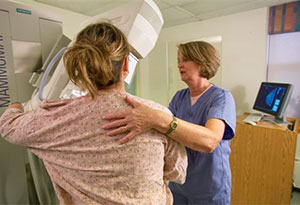
Improving regional kidney disease programs
The Ontario Renal Network commits $3 million in funding to 26 regional kidney disease programs.
Involving patients in cancer care
With the launch of the Patient and Family Advisory committee we give our Patient and Family Advisors a key role in informing our strategic priorities, developing the Ontario Cancer Plan and providing linkages to regional patient engagement initiatives and strategies. Since the launch our Patient and Family Advisor community is now engaged at almost every level of our organization.

2012:
Setting out a road map for renal care
The Ontario Renal Network launches the Ontario Renal Plan 1 (2012-2015), providing a road map to guide the delivery of kidney care services in Ontario. The plan provides guides to improve the life of individuals with kidney disease in Ontario by supporting excellent, evidence-based Chronic Kidney Disease care.
Taking a policy level approach to the prevention of chronic diseases
The Taking Action to Prevent Chronic Disease report is published in partnership with Public Health Ontario. This report lays out 22 policy level recommendations to make the healthy choice easy for Ontarians, with the ultimate goal of reducing the burden of chronic disease.

Improving access and support through aboriginal cancer leads and patient navigators
Establishment of regional aboriginal cancer leads and patient navigators, a goal outlined in the Aboriginal Cancer Strategy. Aboriginal Patient Navigators and Regional Aboriginal Cancer Leads work with Aboriginal patients and families to meet their unique needs and build regional capacity to address the challenges in cancer care for First Nations, Inuit and Métis populations.
2013:
Driving large scale improvements in provincial breast cancer screening
An independent study conducted by our lead research scientist Dr. Anna Chiarelli examines the technology used for mammography and finds that digital direct radiography and screen film are significantly more effective than digital computed radiography at detecting breast cancer. This research leads to province wide changes to transition all mammography to digital direct radiography.
Improving the quality of care
The establishment of the Quality Management Partnership (comprised of the College of Physicians and Surgeons of Ontario and Cancer Care Ontario) by the Ministry of Health and Long-Term Care in March 2013 allows for the implementation of provincial quality management programs in three health service areas: colonoscopy, mammography and pathology.
On the road with cancer screening
The launch of two new mobile screening coaches allowed us to take screening on the road for breast, cervical and colorectal cancer. Each of the two coaches are outfitted with state-of-the-art digital mammography equipment, trained medical staff able to perform Pap tests and provide kits for at-home colorectal cancer screening.

2014:
Taking a personal approach to improving cancer screening
The Ontario Cervical Screening Program launches personalized correspondence that invites and reminds women to attend their pap tests and follow ups. Sending letters through the mail is one way of increasing screening rates across the province. Regular cancer screening ensures that more cancers are caught earlier when there are more treatment options and a better chance of survival.
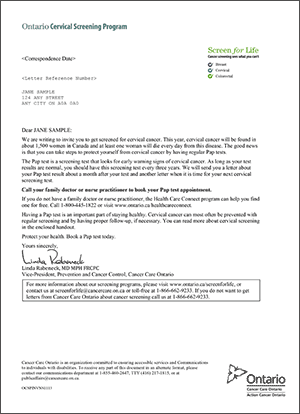
2015:
Do you know your cancer IQ?
MyCancerIQ launches. An online tool developed to allow men and women to calculate their personalized risk of developing breast, cervical, colorectal and lung cancers. Individuals can use this tool to understand their cancer risk and learn what they can do to help lower that risk by focusing on specific changes they can make to live a healthier life.
Bringing care closer to home
Home dialysis, or independent dialysis, launches to allow patients to self-administer their treatment in their home, without direct medical intervention. This program enables individuals who are psychologically, medically and socially suitable to adopt this in-home care plan.

Measuring the effect of system-level initiatives in cancer prevention and early detection
With the launch of the 2015 Prevention System Quality Index we are now analyzing 15 indicators spanning the domains of tobacco, alcohol, healthy eating, physical activity, environment, ultraviolet radiation and cancer screening. For the first time this allows us to measure the effect of system-level initiatives in cancer prevention and early detection.
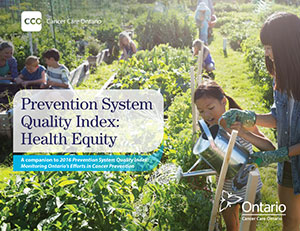
2016:
Launching Your Voice Matters
We are now able to capture and measure patient experience close to real-time or at point of care. Your Voice Matters allows patients to give feedback on the care they are receiving and provides us with data from across the regional cancer centres, allowing us to measure progress over time and make meaningful improvements to care.
Introducing the Ontario Palliative Care Network
The launch of the Ontario Palliative Care Network signals the start of a partnership of community stakeholders, health service providers and health system planners who will develop a coordinated and standardized approach for delivering hospice palliative care services in the province.
Presenting data on chronic kidney disease
The Chronic Kidney Disease Atlas launches, presenting data collected from 2010 to 2015 on Ontario patients with advanced chronic kidney disease and end-stage renal disease. The atlas allows for the analysis of trends in kidney disease, care and surveillance across Ontario.
Determining the state of cancer in Ontario
The Ontario Cancer Statistics launch gives us insight into complied data from the Ontario Cancer Registry to provide us with the first comprehensive look at the state of cancer in the province, focusing on the incidence, mortality, survival and prevalence of the disease.
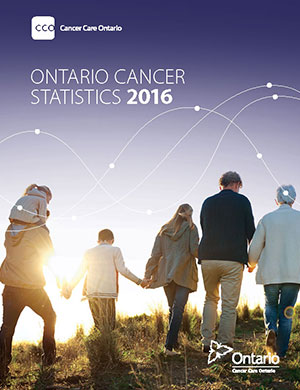
2017:
Going digital
Standardizing the application of national triage guidelines across Ontario, we establish an electronic triage decision system to collect and analyze triage data. Province-wide implementation of the system ensures that no matter where patients are they will receive consistent and high-quality triage care.
Screening for lung cancer
Starting in June 2017, we initiate a pilot to begin organizing lung cancer screening for people at high risk across Ontario. Pilot sites are based out of The Ottawa Hospital, Renfrew Victoria Hospital, Health Sciences North in Sudbury and Lakeridge Health in Oshawa.
